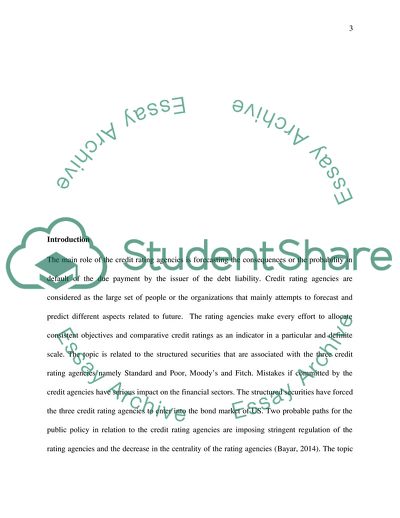Cite this document
(To what extent were the credit ratings agencies (CRAs) responsible for Term Paper, n.d.)
To what extent were the credit ratings agencies (CRAs) responsible for Term Paper. https://studentshare.org/macro-microeconomics/1855453-to-what-extent-were-the-credit-ratings-agencies-cras-responsible-for-misperceptions-of-risks-associated-with-structured-securities-are-there-organisational-reasons-why-cras-might-tend-to-misrepresent-the-riskiness-of-these-financial-instruments-what-m
To what extent were the credit ratings agencies (CRAs) responsible for Term Paper. https://studentshare.org/macro-microeconomics/1855453-to-what-extent-were-the-credit-ratings-agencies-cras-responsible-for-misperceptions-of-risks-associated-with-structured-securities-are-there-organisational-reasons-why-cras-might-tend-to-misrepresent-the-riskiness-of-these-financial-instruments-what-m
(To What Extent Were the Credit Ratings Agencies (CRAs) Responsible for Term Paper)
To What Extent Were the Credit Ratings Agencies (CRAs) Responsible for Term Paper. https://studentshare.org/macro-microeconomics/1855453-to-what-extent-were-the-credit-ratings-agencies-cras-responsible-for-misperceptions-of-risks-associated-with-structured-securities-are-there-organisational-reasons-why-cras-might-tend-to-misrepresent-the-riskiness-of-these-financial-instruments-what-m.
To What Extent Were the Credit Ratings Agencies (CRAs) Responsible for Term Paper. https://studentshare.org/macro-microeconomics/1855453-to-what-extent-were-the-credit-ratings-agencies-cras-responsible-for-misperceptions-of-risks-associated-with-structured-securities-are-there-organisational-reasons-why-cras-might-tend-to-misrepresent-the-riskiness-of-these-financial-instruments-what-m.
“To What Extent Were the Credit Ratings Agencies (CRAs) Responsible for Term Paper”. https://studentshare.org/macro-microeconomics/1855453-to-what-extent-were-the-credit-ratings-agencies-cras-responsible-for-misperceptions-of-risks-associated-with-structured-securities-are-there-organisational-reasons-why-cras-might-tend-to-misrepresent-the-riskiness-of-these-financial-instruments-what-m.


